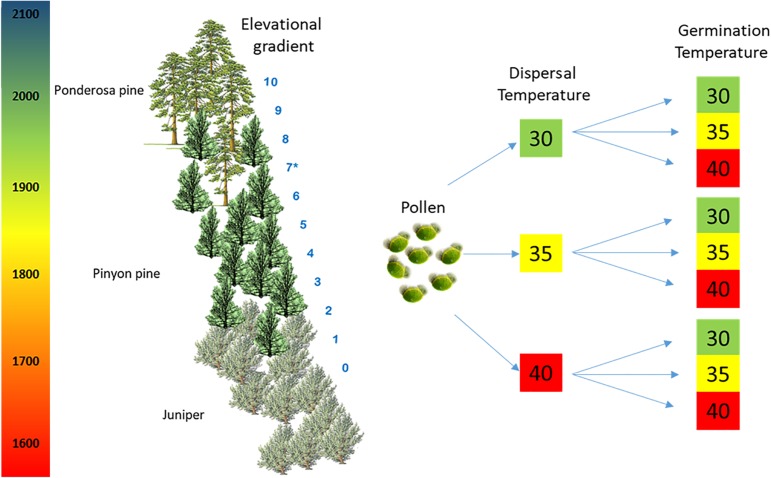FIGURE 1.
Experimental design. Experiment 1: Pollen from 24 trees was collected and warmed at different temperatures, pollen during the dispersal stage: 30, 35, 40, and 4°C which served as a control of optimal storage conditions (not shown in the figure). Reciprocal temperature treatments were also done during germination: 30, 35, and 40°C. This experiment was performed in 2012 from trees at the elevational gradient site 7∗. Experiment 2: Vegetation composition was determined at 11 sites along an elevational gradient (0–10). From sites 1–9, where pinyon pines were present, six trees per site were studied and pollen was warmed simulating the two temperature treatments, dispersal and germination, in a reciprocal fashion, as shown in the figure. Site 9 was excluded from the analysis because of its low pollen production. In the region of our study, there is a change in temperature of 4°C in a little over 200 m represented by the color gradient bar on the left, lower elevations experience higher temperature – red, compared to higher elevations – green.

